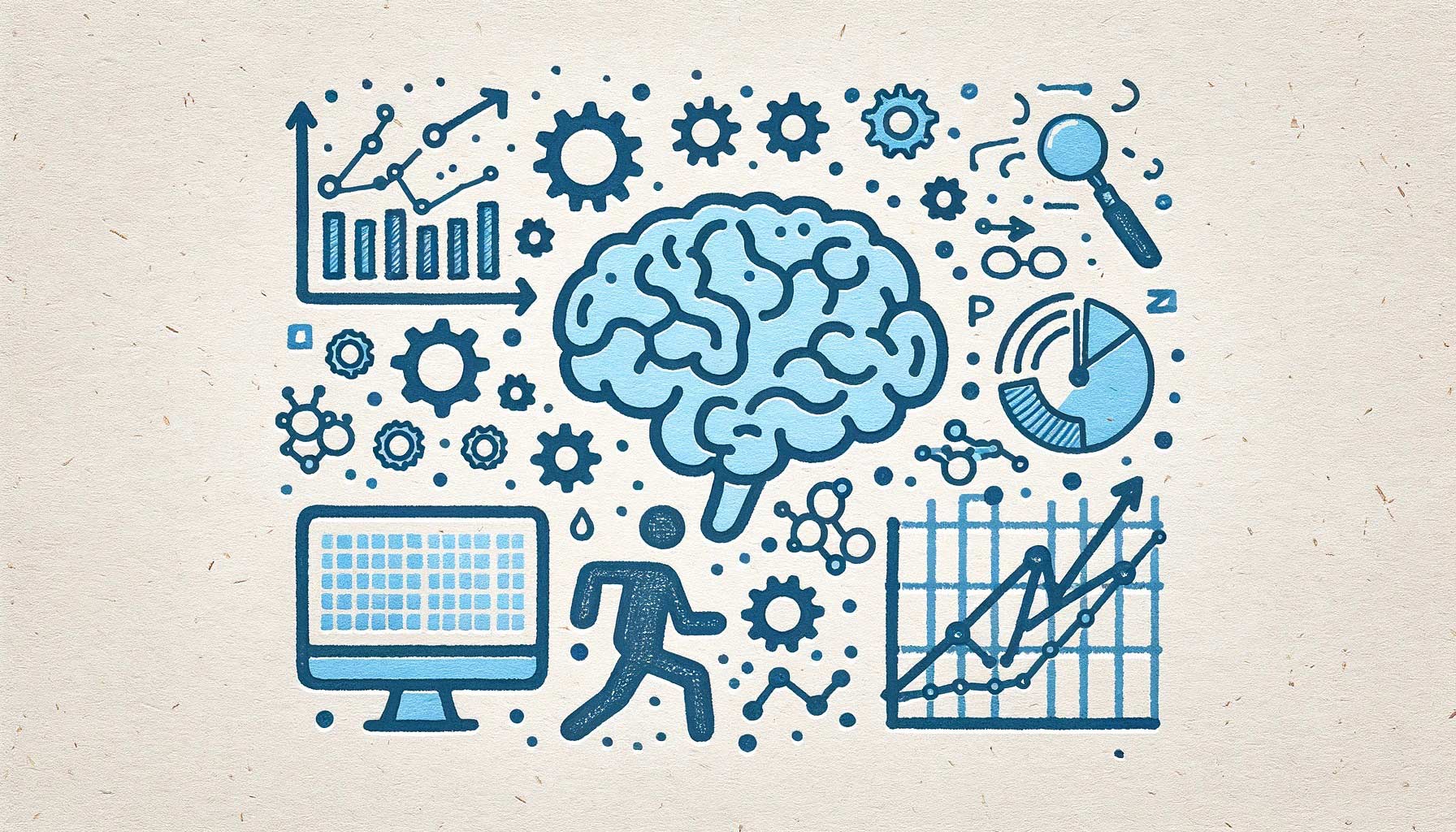1. Introduction
Welcome back to our mini-series on machine learning in health research! This article focuses on unsupervised learning, an essential machine learning method, and its applications in physical activity research using accelerometry.
Unsupervised learning deals with data that lacks predefined labels. Unlike supervised learning, this approach allows the algorithm to discover patterns, structures, and relationships within the data independently. It’s like giving a child a set of mixed flashcards and asking them to sort them without any prior instructions.
Steps in Unsupervised Learning:
- Data Collection: Assemble a dataset without labeled outcomes.
- Data Preparation: Clean and organize the data for analysis.
- Algorithm Training: Apply clustering and association algorithms to identify patterns.
- Pattern Evaluation: Evaluate the discovered patterns for their meaningfulness and utility.
2. Applications in Physical Activity Studies
Unsupervised learning is particularly useful for analyzing physical activity data from accelerometers. Here are some key applications:
Identifying Activity Clusters:
- Example: Using accelerometer data to find clusters of similar physical activity patterns. For instance, the algorithm can group individuals with similar activity profiles (e.g., high activity, moderate activity, low activity).
- Impact: This helps researchers understand various physical activity behaviors within a population, aiding in the design of targeted health interventions.
Detecting Anomalies:
- Example: Identifying unusual activity patterns that differ from the norm. For example, the algorithm can detect periods of inactivity in an otherwise active person, which might indicate a health issue.
- Impact: This enables early detection of potential health problems, allowing for timely intervention and treatment.
“Unsupervised learning reveals hidden patterns and anomalies in physical activity data, offering valuable insights for health research.”
3. Benefits and Challenges
Benefits:
- No Need for Labeled Data: Can handle large datasets without the need for labeling, saving time and resources.
- Discovery of Hidden Patterns: Identifies patterns that may not be immediately obvious, providing deeper insights.
Challenges:
- Interpretability: The patterns found by unsupervised learning algorithms can be difficult to interpret and may require further analysis to make them actionable.
- Validation: Validating the results of unsupervised learning can be challenging since there are no predefined outcomes to compare against.
4. Examples in Research
Cluster Analysis of Physical Activity Patterns:
- Study: Researchers used cluster analysis to group individuals based on their physical activity patterns. The study identified distinct activity profiles, helping to understand the diversity of physical activity behaviors in the population.
- Reference: Troiano, R. P., et al. (2008). “Physical Activity in the United States Measured by Accelerometer.” Medicine & Science in Sports & Exercise. Read more
Anomaly Detection in Physical Activity Data:
- Study: This research used unsupervised learning to detect anomalies in accelerometer data. The algorithm identified periods of abnormal inactivity, which were linked to health events such as injuries or illnesses.
- Reference: John, D., & Freedson, P. (2012). “ActiGraph and Actical physical activity monitors: a peek under the hood.” Medicine & Science in Sports & Exercise. Read more
5. Conclusion
Unsupervised learning is a powerful tool in physical activity research, allowing researchers to uncover hidden patterns and detect anomalies in accelerometer data. These insights can lead to a better understanding of physical behavior and more effective health interventions.
In the next article, we’ll compare supervised and unsupervised learning, highlighting their key differences and discussing scenarios where each method is most effective. We’ll also explore hybrid approaches that combine both methods for more robust analysis.
References
- Troiano, R. P., et al. (2008). “Physical Activity in the United States Measured by Accelerometer.” Medicine & Science in Sports & Exercise. Read more
- John, D., & Freedson, P. (2012). “ActiGraph and Actical physical activity monitors: a peek under the hood.” Medicine & Science in Sports & Exercise. Read more
You Might Also Be Interested
🚀📊 Learn more about how Fibion SENS can help you in your projects measuring physical activity and sedentary behavior!
🔍 Elevate your project with Fibion SENS Motion 3 Devices Test Package for precise activity analysis. Order now for hands-on experience and comprehensive insights.

📅 If you want to learn more about Fibion SENS, do not hesitate to book a video call with our expert Dr. Miriam Cabrita.

🔍 You may also discover other valid and reliable products in our portfolio, such as the Fibion Device, Fibion Sleep, Fibion Mimove, Fibion Vitals, Fibion Emfit, and Fibion Circadian, all designed to assist in research measuring physical activity, sedentary behavior, and sleep.
Frequently asked questions:
What is unsupervised learning in machine learning? +
Unsupervised learning is a type of machine learning that deals with data lacking predefined labels. It allows algorithms to independently discover patterns, structures, and relationships within the data, providing insights without prior instructions.
How is unsupervised learning used in physical activity research? +
Unsupervised learning is used in physical activity research to identify activity clusters and detect anomalies. By analyzing accelerometer data, it groups similar activity patterns and identifies unusual patterns that may indicate health issues.
What are the steps in unsupervised learning? +
The steps in unsupervised learning include data collection, data preparation, algorithm training, and pattern evaluation. These steps involve assembling unlabeled datasets, cleaning and organizing data, applying clustering and association algorithms, and evaluating the discovered patterns.
What are the benefits of unsupervised learning in physical activity studies? +
The benefits of unsupervised learning include the ability to handle large datasets without the need for labeling, saving time and resources, and the discovery of hidden patterns that provide deeper insights into physical activity behaviors.
What are the challenges of using unsupervised learning? +
Challenges of using unsupervised learning include the difficulty in interpreting discovered patterns and the challenge of validating the results since there are no predefined outcomes for comparison. Further analysis is often needed to make the patterns actionable.
How does unsupervised learning impact physical activity research? +
Unsupervised learning impacts physical activity research by revealing hidden patterns and detecting anomalies in accelerometer data. These insights help researchers understand physical behavior better and develop more effective health interventions.















